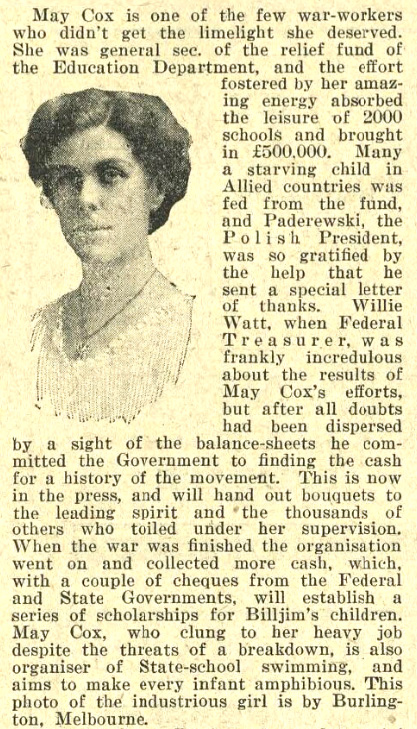Published 8 March 2022

Royal Life Saving Society in Australia has a rich history of pioneering women who have contributed greatly to drowning prevention in Australia.
This International Women’s Day 2022 we highlight May Cox, a talented and often underrepresented figure from swimming and water safety education history. Royal Life Saving Australia encourages everyone to promote womens achievements and work towards a world free of bias, stereotypes, and discrimination.
Together we can forge women's equality.
Collectively we can all #BreakTheBias.
May Cox – Swimming and Water Safety Education Pioneer
May Cox broke the stereotype of women in swimming and water safety, rising from a swimming coach to become the first and only woman Supervisor of Swimming and Lifesaving in the Victorian Education Department.
At the turn of the 20th Century, women were not allowed to continue teaching once they married and rarely could a woman hold a position of responsibility outside the classroom. In 1910, when May Cox took on the highly visible Supervisor role, she was one of very few women to have their skills recognised.

Her road to success began in 1899 as the coach of the girls’ swimming teams at Albert Park State School, Melbourne. May’s drive and commitment supported one of her students, Lily Beaurepaire, to become the first woman to represent Australia in the Olympic Games.
She pioneered the swimming and lifesaving program, and instructed teachers and children in swimming and lifesaving skills, travelling around Victoria and using the open sea, sea-baths, the Murray River, and other rivers, together with the famous Surrey Dive, Box Hill, for the classes.
Thousands of Victorians learned to swim through her programs. In 1928 alone, it was reported in The Education Gazette and Teachers Aid that 14,000 children learned to swim and 8,000 gained lifesaving skills.
But her success was not limited to swimming and water safety instruction. She was a determined advocate for local swimming pools and travelled extensively across Victoria to advise on the building and maintenance of local pools.
Her legacy continues today. The pioneering Victorian ‘Learn to Swim’ program continues today through the VicSwim program.
In most cases, it is women who play the leading role in swimming and water safety policy, research and programs across Australia. Key roles in education departments, aquatic facilities, water safety organisations and research institutions are female. On International Women’s Day 2022 we celebrate their contribution to water safety and drowning prevention.

1933, Cox and Beaurepaire co-authored, Swimming: Hints for Instructors.
Source: May Cox: Leading Swimming and Lifesaving Advocate and Patriotic Fundraiser, 1910–1938 Deborah Towns Business, Work and Ageing Centre for Research Swinburne University of Technology
